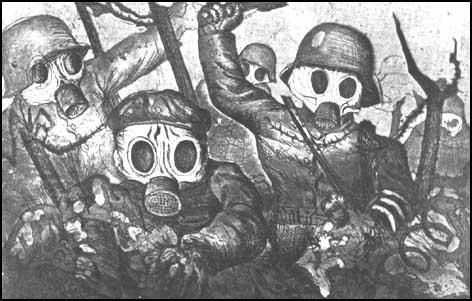Source: Washington Post Editorial (Originally titled: Syria’s new atrocities)
TWICE SINCE 2011, President Obama has delivered major speeches citing the free flow of oil as a U.S. “core interest” in the Middle East. The prevention of mass atrocities has been a lower priority; in a 2013 address Mr. Obama said that it should be pursued only in conjunction with allies and without the use of U.S. military force.
It was therefore surprising to hear an apparent reversal by the president in an interview this month. “At this point, the U.S.’s core interests in the region are not oil,” he told the New York Times. “Our core interests are that everybody is living in peace .?.?. that children are not having barrel bombs dropped on them, that massive displacements aren’t taking place.”
In making this rare reference to the ongoing crimes against humanity in Syria, Mr. Obama could have been referring to something very specific. On March 16, according to the State Department, the regime of Bashar al-Assad dropped barrel bombs on the town of Sarmin that reportedly contained chlorine. Six people, including three children, were killed. According to a report released Monday by Human Rights Watch, this was one of six barrel bomb attacks involving the suspected use of chlorine or other chemicals around the northern city of Idlib between March 16 and March 31.
Secretary of State John F. Kerry reacted strongly to the first strike, issuing a statement saying that the regime’s use of chlorine would violate the Chemical Weapons Convention. “The international community cannot turn a blind eye to such barbarism,” Mr. Kerry said. “We are looking very closely into this matter and considering next steps.”
We’d like to hope that the words of the president and secretary of state suggest that the administration is reconsidering its refusal to take consequential action against the Assad regime, which continues to cross the red line once established by Mr. Obama by using chemical agents against civilians — and is the root source of the turmoil destroying both Syria and Iraq.
So far, unfortunately, turning “a blind eye” remains the best description of U.S. behavior. The administration is nominally pursuing a weak initiative to train 15,000 Syrian fighters over three years, with the help of regional allies. But the effort has been excruciatingly slow to get off the ground, in part because of the administration’s insistence that the sole mission of the force must to fight the Islamic State.
A report issued last week by the Atlantic Council offered one way forward: converting the underpowered training mission into a project to build a 50,000-member “Syrian national stabilization force” capable of imposing order across the country. As Frederic Hof, a former State Department adviser on Syria, noted in presenting the study, just the announcement that the United States intended to build such a force could soften the diplomatic impasse that now makes a negotiated end to the Syrian war impossible.
Without question this would be a major undertaking: As a starting point it would require the creation of the northern Syrian safe zone that Mr. Obama has resisted for years. But it would offer a path to ending the Assad regime and its crimes. That makes it a more realistic course than the president’s refusal to act — which won’t protect core U.S. interests, or save a single child from a barrel bombing.



COMMENTS